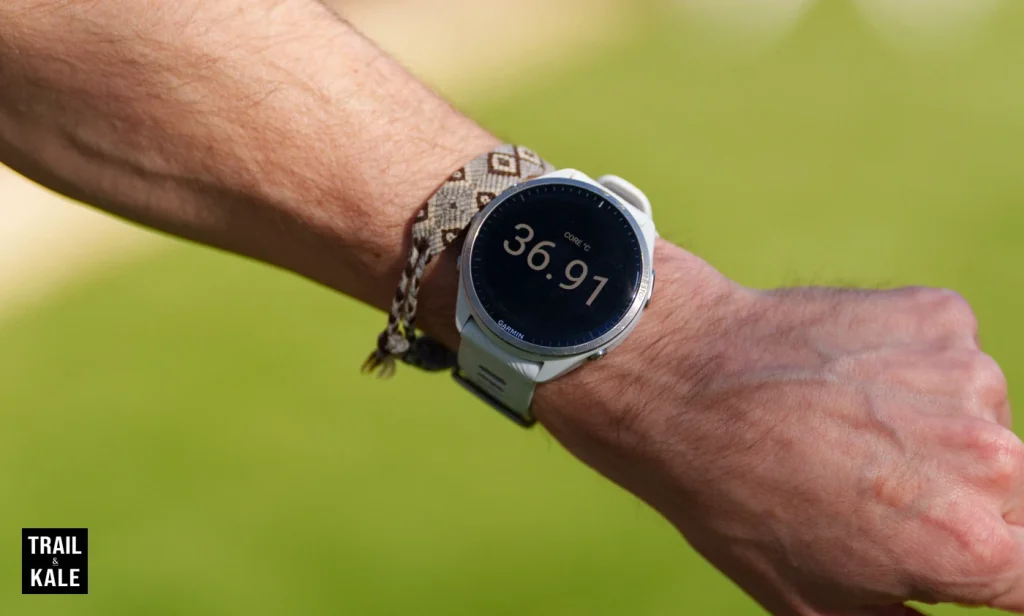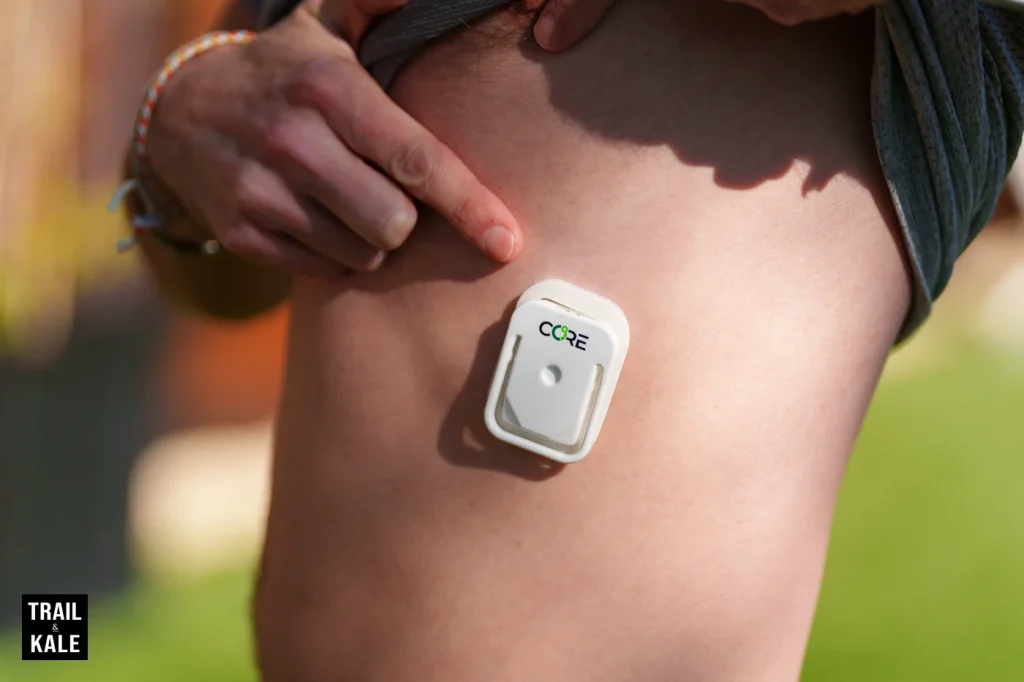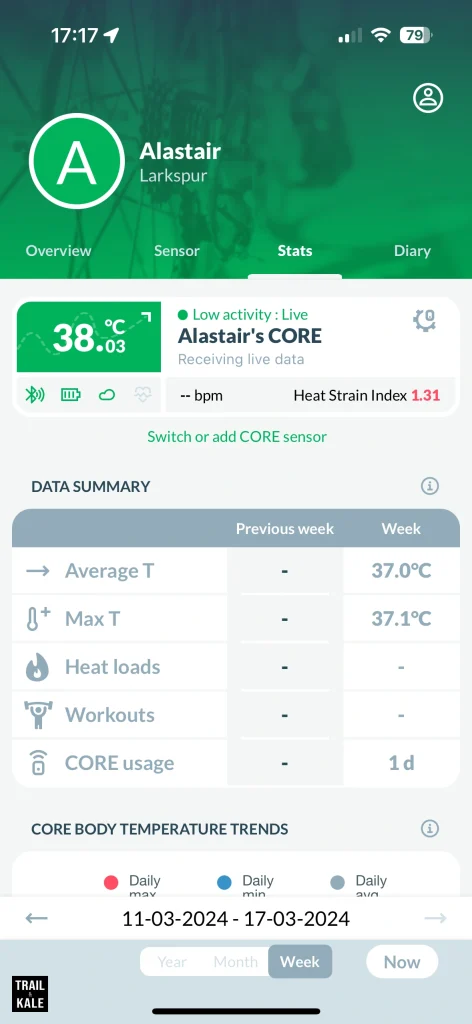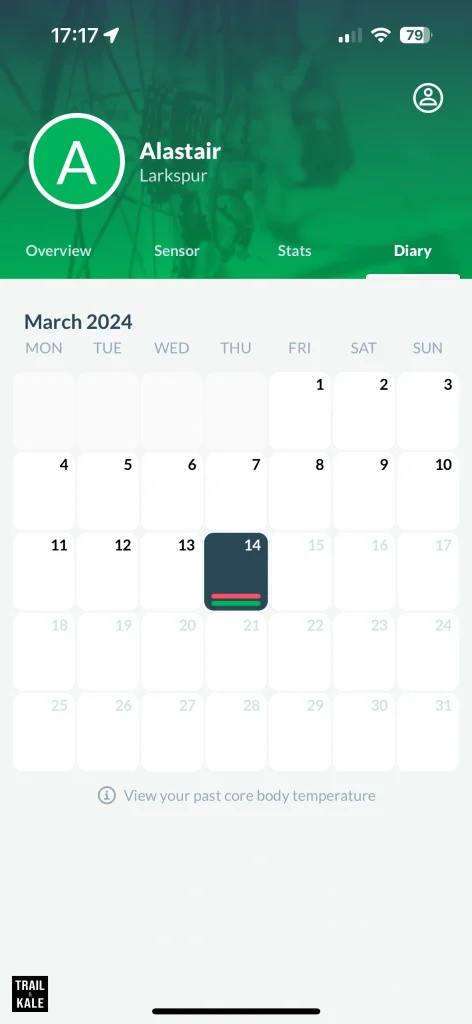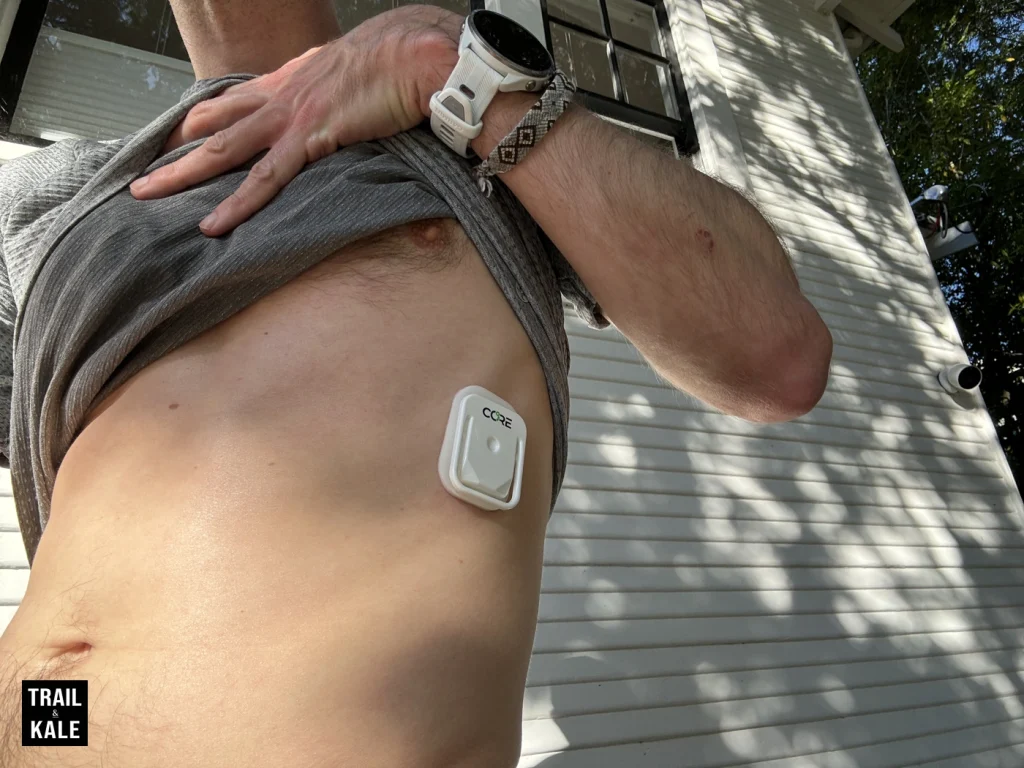CORE, a Swiss brand based in Zürich, has emerged as a bit of a trailblazer in the wearable technology market with its debut product, the CORE Body Temperature Sensor. This innovative device is aimed at athletes and fitness enthusiasts who are eager to push their performance boundaries by utilizing an often overlooked but extremely important performance metric, body temperature.
With the understanding that core body temperature is a pivotal metric for athletic performance, CORE’s sensor is designed to cater to the needs of runners, cyclists, and triathletes. The sensor’s precision and ease of use make it a tool worth considering, for anyone looking to optimize their training and race day performance.
CORE Body Temperature Sensor review
Key specifications
- Price: $284.95
- Battery Life: 6 days of continuous transmission time, up to 6 weeks with sleep mode enabled
- Accuracy: Medical-grade accuracy, based on ISO_80601-2-56, mean absolute deviation of 0.21 °C
- Size: 40mm in width, 50mm in height, and 8.35mm in depth
- Weight: Light, at just 0.4oz (12g)
- Waterproof Rating: Up to 1.5m (IPX7)
- Connectivity: Bluetooth BLE & ANT+ connectivity for easy pairing with devices and apps
- Compatibility: Works with CORE iOS and Android app, watchOS, Wear OS, Garmin ConnectIQ watches, Wahoo bike computers, COROS watches, Suunto watches, and more
Standout features and what’s in the box
Upon unboxing, you’re greeted with the sleek CORE sensor unit, a USB magnetic charging cable, six medical-grade adhesive patches, clips for securing the sensor to a heart rate (HR) monitor strap, and a comprehensive guide for setting up the CORE iOS/Android app.
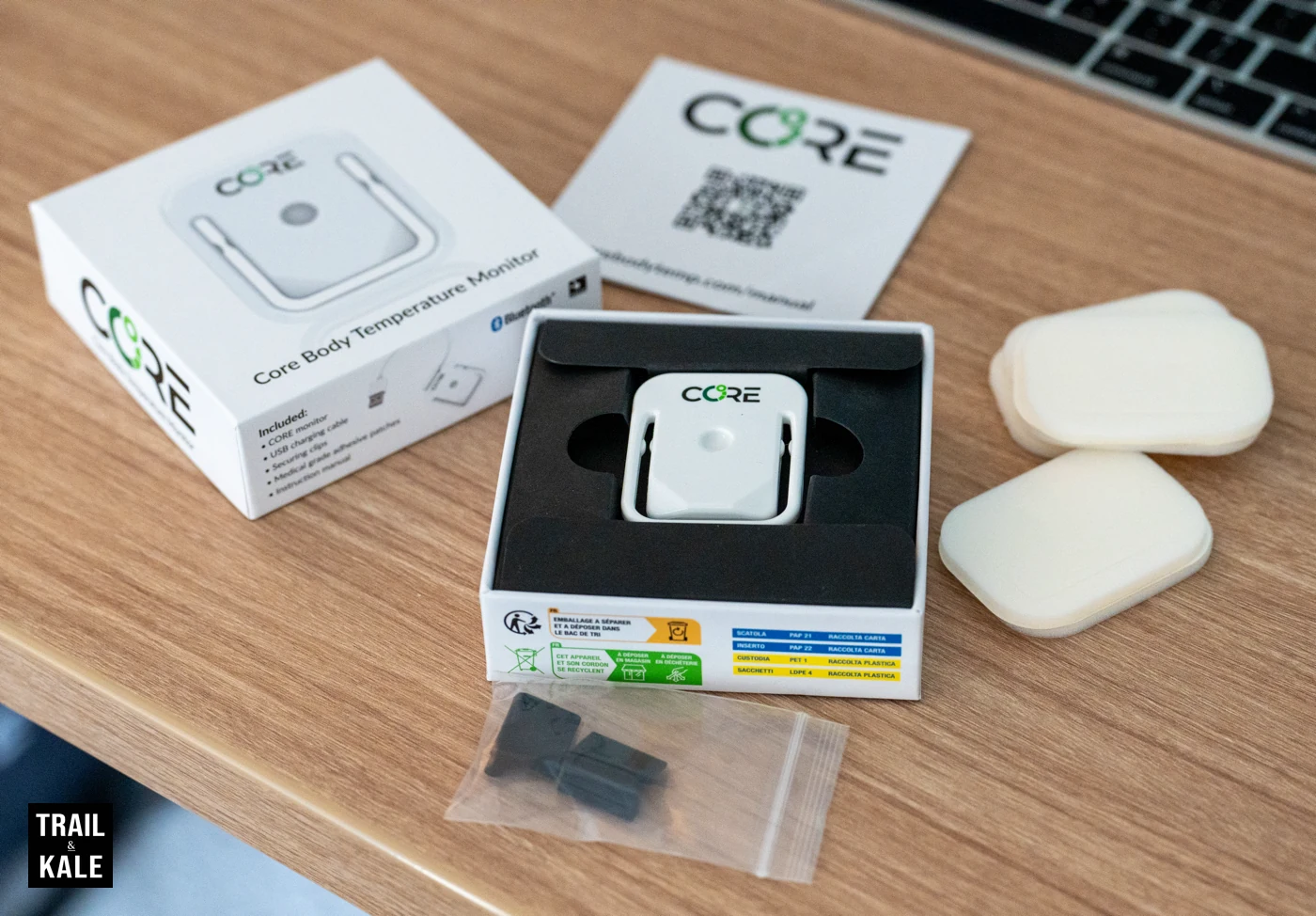
It’s a bit of a shame it doesn’t come with a chest strap included, for those of us who don’t already own a chest strap HR monitor, or wear a sports bra. If you already own an arm strap HR monitor like the COROS Heart Rate Monitor, then you can attach it to this too but it’s more accurate worn on the chest.
If you don’t own either, you can use the included medical-grade adhesive patches to affix the unit to the side of your chest.
The sensor’s compact and waterproof design (40mm width x 50mm height x 8.35mm depth, weighing just 12 grams) makes it unobtrusive and comfortable for all-day wear, and even in the most demanding sports and activities.
Performance and technical details
The CORE Body Temperature Sensor stands out for its continuous, accurate core body temperature monitoring, with medical-grade accuracy (based on ISO_80601-2-56, mean absolute deviation of 0.21 °C).
It’s non-invasive, worn on the chest, and unaffected by environmental thermal influences. The device promises a battery life of 6 days of continuous transmission time, with up to 6 weeks in sleep mode, thanks to its rechargeable lithium-polymer battery.
Connectivity is easy with Bluetooth BLE & ANT+ compatibility, connecting seamlessly with a wide range of devices that you probably already own including iOS and Android apps, Garmin ConnectIQ watches, Wahoo bike computers, COROS watches, Suunto watches, and more.
This ensures that your core body temperature data is effortlessly integrated into your existing sports tech ecosystem. I choose Garmin for tracking all my running data, and that’s how I’ve been testing the CORE Body Temperature Sensor for this review.
The importance of monitoring your core body temperature during exercise
Monitoring your core body temperature offers a wealth of benefits for optimizing performance. For example, it enables athletes to make informed cooling and pacing decisions during training and competition.
By understanding how your body’s temperature responds to various conditions, you can tailor your training to improve heat adaptation, potentially unlocking significant performance gains.
You may think that all this can be gained simply from monitoring your heart rate when training but actually core body temperature paints a more detailed picture as it better takes into account the effect of your external temperature/environment too.
The CORE sensor provides this crucial data in real time, helping athletes to push their limits while minimizing the risks of overheating.
The science and user experience
The CORE sensor employs an innovative thermal energy transfer sensor coupled with an AI algorithm built from over one billion data points, ensuring unparalleled accuracy and reliability.
Unlike other wearables that may only measure skin temperature, CORE’s technology accurately reflects your body’s core temperature, offering insights that can transform your training and racing strategy on the fly.
For sports and high-intensity activities, pairing the CORE sensor with a heart rate monitor enhances accuracy. The sensor’s versatility allows it to be worn on the side of the torso, clipped to a chest strap or sports bra for convenience during sports activities.
For daily monitoring, the medical-grade adhesive patches offer a more practical solution, allowing the CORE sensor to fit more effortlessly into an athlete’s lifestyle, day and night.
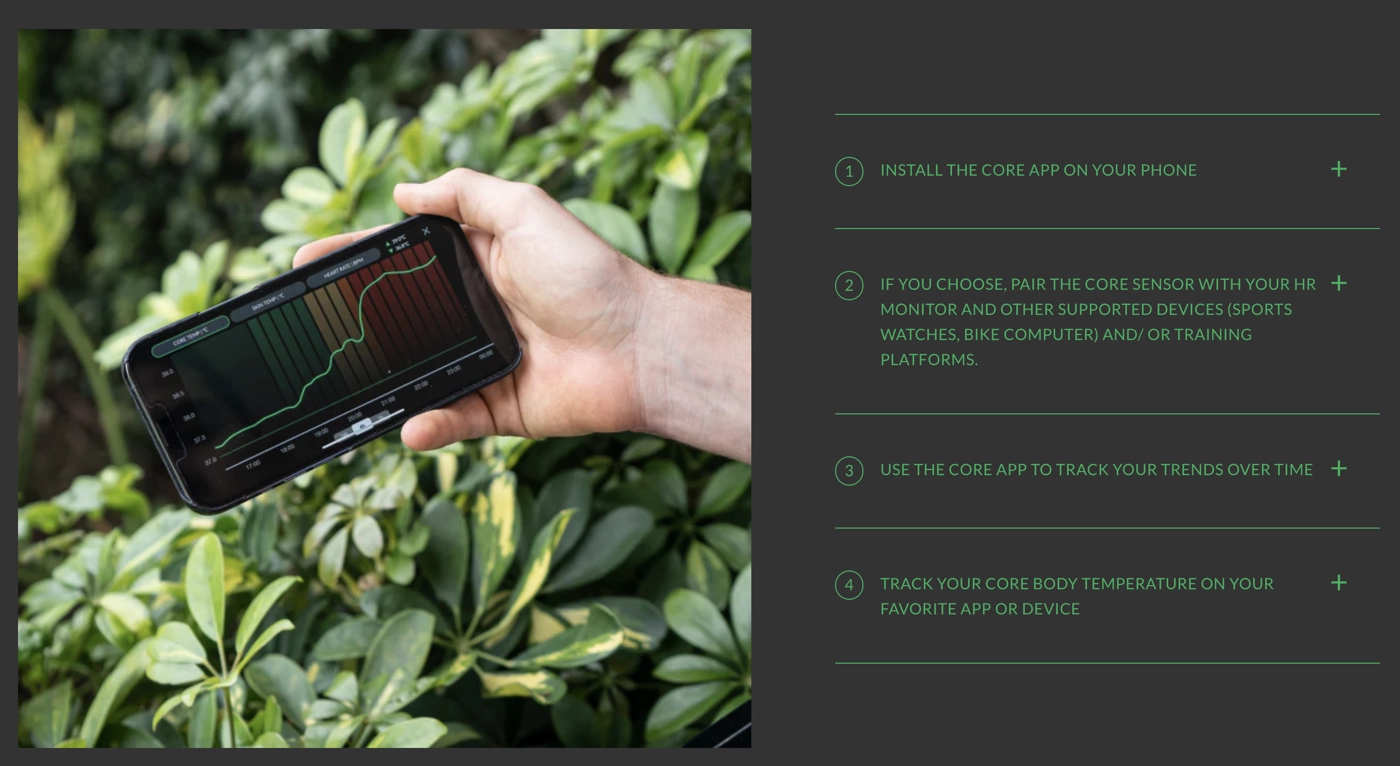
To learn how to get the device set up, visit this page on their website, which explains the process.
I like how it monitors skin temperature and core body temperature
This is actually really cool to see on a work out. What’s the difference, and why does it matter, you ask?
We often focus on skin temperature, feeling cold when touching ice or warm with a hot coffee, and can experience cold extremities with a warm torso or feel internal heat despite goosebumps in chilly air.
Core body temperature, however, can differ greatly from skin temperature, especially during sports. For instance, a runner might have cool skin while running into wind or downhill but maintain a high core body temperature when exerting effort.

Skin temperature also goes down when we sweat, and the breeze hits our skin – isn’t the human body clever! This is actually really clear to see in this run that I did with the CORE Body Temperature sensor (see image above).
Data management and compatibility
The CORE sensor stores up to two days of data onboard. It syncs with the CORE Cloud via the app for long-term trend analysis, helping athletes to see how core body temperature correlates with performance metrics over time.
Its compatibility with popular ANT+ and Bluetooth sport devices ensures that your core body temperature data is readily available on your device of choice, without the need for a smartphone during activities.
Review summary
The CORE Body Temperature Sensor is a game-changer for athletes focused on precision and optimization in their training – that’s not every athlete by the way, some won’t have the desire to dive this deep into their performance metrics for fear of overwhelm but for the runner looking to be their best, become a faster runner, or maybe even clinch a place on the podium, the CORE Body Temperature Sensor may well be worth investing in.
Its cutting-edge technology, ease of use, and seamless integration into existing training ecosystems make it an invaluable tool for anyone serious about improving their performance. Whether you’re a runner, cyclist, triathlete, or outdoor enthusiast, the CORE sensor offers the insights needed to train smarter, perform better, and achieve your athletic goals.
Image Gallery
